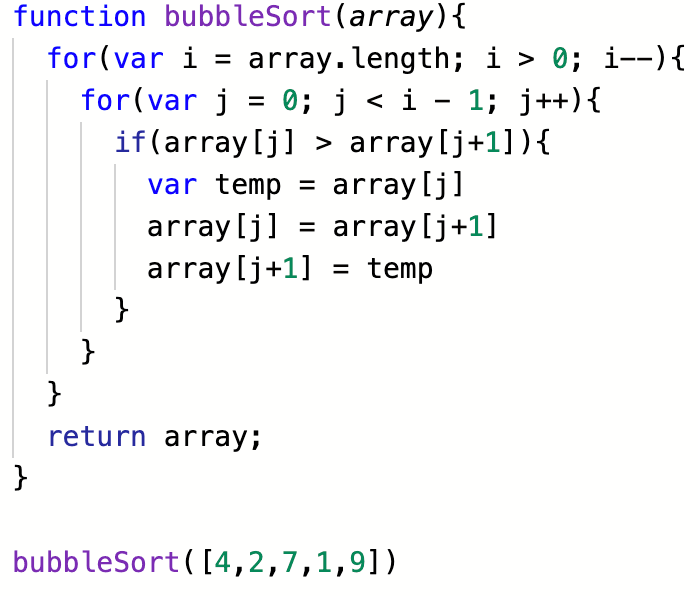When you hear the term programming, what comes to mind? If you have some knowledge of the field, you might think of learning programming languages, writing code, and mastering syntax. While these are essential aspects, there’s another critical element in programming: understanding and mastering algorithms.
In this article, we’ll dive into what an algorithm is and why it’s a vital part of programming.
Understanding Algorithms The Backbone of Modern Technology

The term algorithm is often heard, even outside the tech world, in contexts like Google search algorithm or algorithmic trading. But what does it really mean?
General Definition of an Algorithm
According to Kotobank, an algorithm is:
- A method or procedure for solving a problem. It outlines a problem-solving approach and serves as the foundation for developing software.
- A mathematical calculation method for solving problems. Also referred to as an arithmetic method, especially when a problem is expressed using a programming language, it’s known as a computer program.
In simpler terms, an algorithm is a set of steps or methods designed to solve a problem efficiently. It is also the backbone of writing effective software, making it essential for improving your programming skills.
Why Do You Need an Algorithm?

Programming primarily aims to build systems and introduce new features to solve business challenges. However, not just any program will do the job. Even if you create the same system or implement similar features, the efficiency of how the program handles user requests and data processing is crucial.
An algorithm helps you write programs that can process information more efficiently, improving system performance and effectiveness.
Real-Life Example of an Algorithm: “Ginkgo Radish”
To better understand algorithms, let’s look at a real-life example—cutting vegetables.
When preparing a meal, one of the first things you learn is how to cut vegetables. A fundamental technique is the “ginkgo cut,” which involves slicing vegetables like root vegetables into quarters and then cutting them thinly. However, if you ask a cooking novice to cut them, they might use different methods.
Let’s compare two different methods of slicing radish and consider which is more efficient. This comparison will give you a better understanding of how algorithms work in everyday tasks.
Common Algorithm Example: “Bubble Sort“

There are several common algorithms, one of which is the “bubble sort.” This sorting algorithm arranges numerical values according to a specific order. In systems that handle large amounts of data, sorting this data—either in ascending order (smallest to largest), descending order (largest to smallest), or based on other criteria—is crucial.
Recommended Books for Learning Algorithms
Mastering individual algorithms is crucial, but being able to connect and apply these algorithms is the foundation of a programmer’s skill set. This difference in skill level can significantly impact the quality and efficiency of applications.
To help you learn algorithms, here are two highly-rated books:
These books come highly recommended based on reviews and are great resources for learning algorithm programming.
Why Algorithms Matter?

Algorithms are fundamental to everything in technology, driving the processes behind software applications, data analysis and complex problem-solving. An algorithm is essentially a set of instructions or a step-by-step procedure designed to perform a specific task or solve a problem.
In the world of programming, algorithms are crucial because they determine how efficiently a task is completed. A well-designed algorithm optimizes performance, minimizes resource usage, and ensures that programs run smoothly and effectively. This efficiency is especially important in large-scale systems, where the speed and accuracy of data processing can significantly impact overall performance.
Moreover, algorithms are the foundation of innovation in technology. They enable everything from basic computations to advanced machine learning models, powering applications that range from simple mobile apps to sophisticated artificial intelligence systems. Without algorithms, the technology we rely on daily would not be able to function as effectively, making them essential to the progress and development of modern tech.
Conclusion
In essence, an algorithm is a blueprint for solving problems efficiently. It’s the driving force behind every software application, making complex tasks manageable and ensuring that technology operates seamlessly.
Whether you’re coding a simple program or developing advanced AI, understanding and mastering algorithms is crucial. They are not just theoretical concepts but practical tools that empower programmers to create optimized, effective solutions that power our digital world.
Read More
- Top 10 Best VPN Providers 2024
- Scope of Decision Intelligence
- The 9 Types of Cybercrime and its Prevention
- What is a Data Fabric?
- Ubiquitous Computing (UC) The Future of Technology
- What Is Distributed Cloud?

